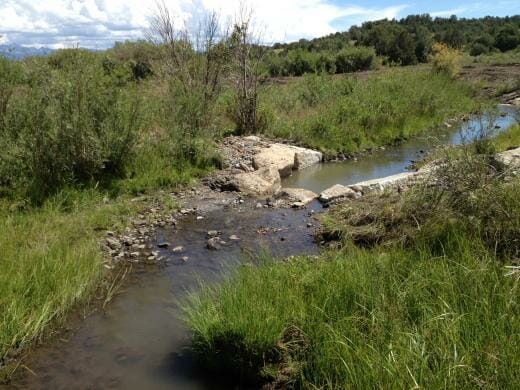Trout Unlimited began organizing sportsmen and women in a coordinated manner in 2001–largely in response to my observation when I worked at the Forest Service that the voice of hunters and anglers was largely missing from the development of the Roadless Area Conservation Rule—an initiative that protected nearly 60 million acres of some of the finest fish and wildlife habitat on the planet.
Trout Unlimited began to lead the way for engaging hunters and anglers in backcountry protection and for responsible energy development. Great results followed such as the Idaho roadless rule, the Wyoming Range Legacy Act, the Rio Grande del Norte and the Cascade Siskiyou monuments, the Copper Salmon and Pine Forest wilderness acts, and on and on.
A few years into this work,Ted Fitzgerald called. He was an engineer and the former district ranger on the Fishlake National Forest. Ted asked, “what is TU doing to engage hunters and anglers to clean up abandoned mines?” Ted explained that abandoned mines are a huge problem for sportsmen and women, as they pollute 40 percent of western headwater streams—the same places where the last strongholds of western native trout persist.
Few groups are willing to take on cleaning up these ticking time bombs because of liability concerns. Given that there is no constituency for acid mine drainage, and nobody likes yellow streams, we assumed fixing these would be easy. So, we added cleaning up abandoned mines to the sportsmen/women agenda at TU. The rationale was simple: “We are merely Good Samaritans who want to clean-up a mess made by someone else. How hard can this be?”
Very hard.
Anglers are a patient and optimistic group. What else explains our passion for standing willingly—joyfully—in freezing water, often in freezing temperatures, casting a combination of fur, feathers, and wire at river ghosts? Patience and optimism are key ingredients to being advocates for abandoned mine clean up, and what has become called, Good Samaritan policy.
Cleaning up abandoned mines can be straightforward. For example, after taking about two years to negotiate an agreement that protected us from liability, we hired Ted to clean up some abandoned mines on American Fork Creek in Utah in about eight days. Our challenge is that we can spend $X to improve water quality by 80 percent in an area affected by abandoned mines. To meet 100 percent of water quality standards may cost $7X. Most reasonable people would say that an 80 percent improvement is pretty good. But under the Clean Water Act, we could be sued, and forced to clean up to 100 percent.
Over the past 15 years, no other non-profit has done as much abandoned mine clean-up work as TU. We pioneered abandoned mine clean ups in Idaho, Montana, Colorado, and Utah. Jason Willis, Lauren Duncan, and our great partners, for example, helped to restore wild trout populations to a decades-dead Kerber Creek in southwest Colorado. Amy Wolfe and her team and partners have cleaned up abandoned coal mines in Appalachia for almost 20 years. On Kettle Creek in Pennsylvania, they recovered six miles of dead stream that now harbor naturally reproducing native brookies.
Momentum is building to pass a Good Samaritan abandoned mine clean-up bill this Congress. We have a lot of great partners such as Tiffany & Co., Freeport MacMoRan, Kinross, Newmont, EPA, Forest Service, BLM, Colorado, and the states. But we could do so much more if the liability issues associated with cleaning up abandoned mines were eased.
Conservation is the application of common sense to common problems for the common good. No definition could better describe the need for Good Samaritan legislation. Cleaning up abandoned coal and hard rock mines is a huge issue for sportsmen and women. Please contact your legislator and ask them to help be part of the solution.
— Chris Wood



